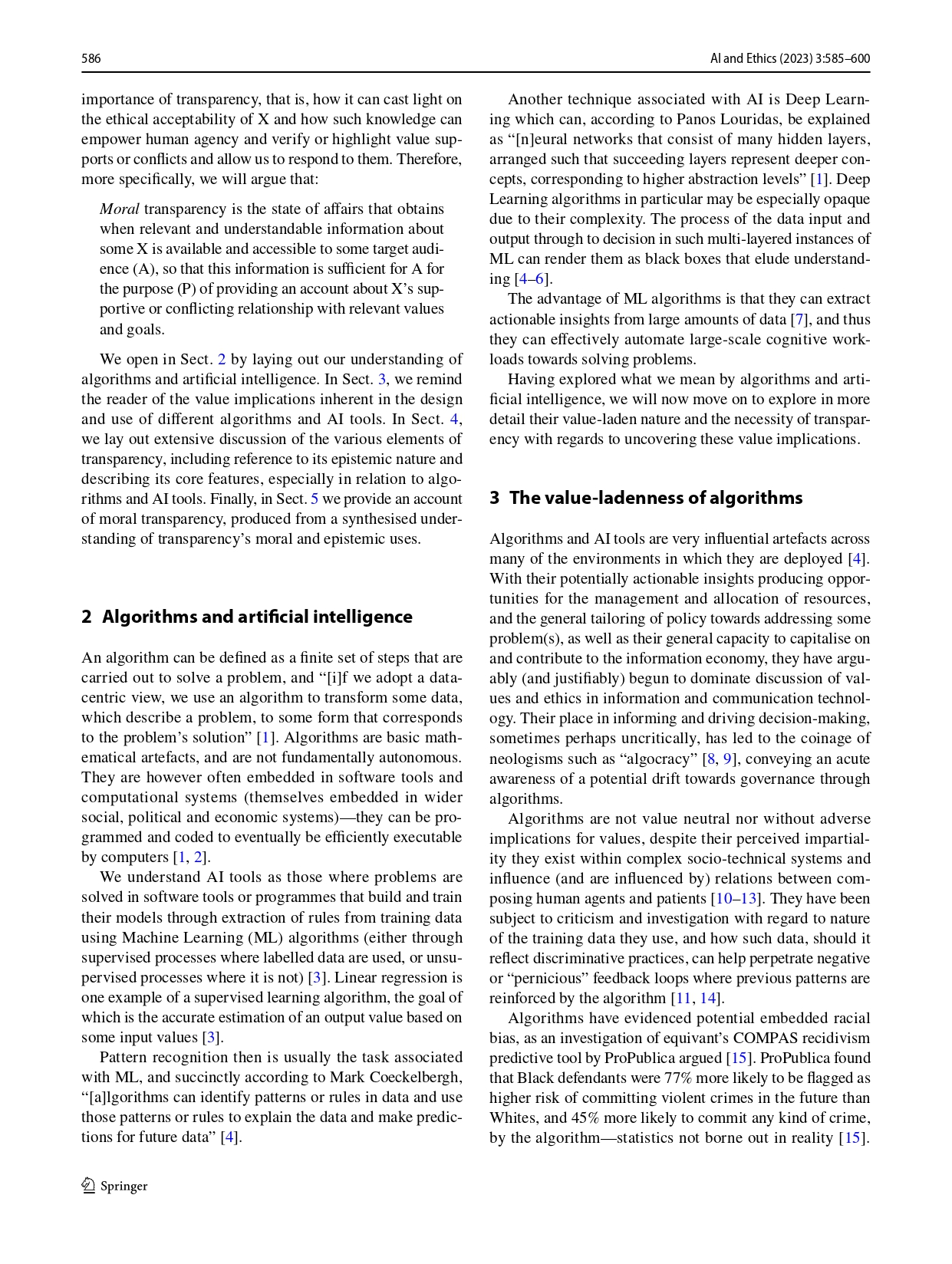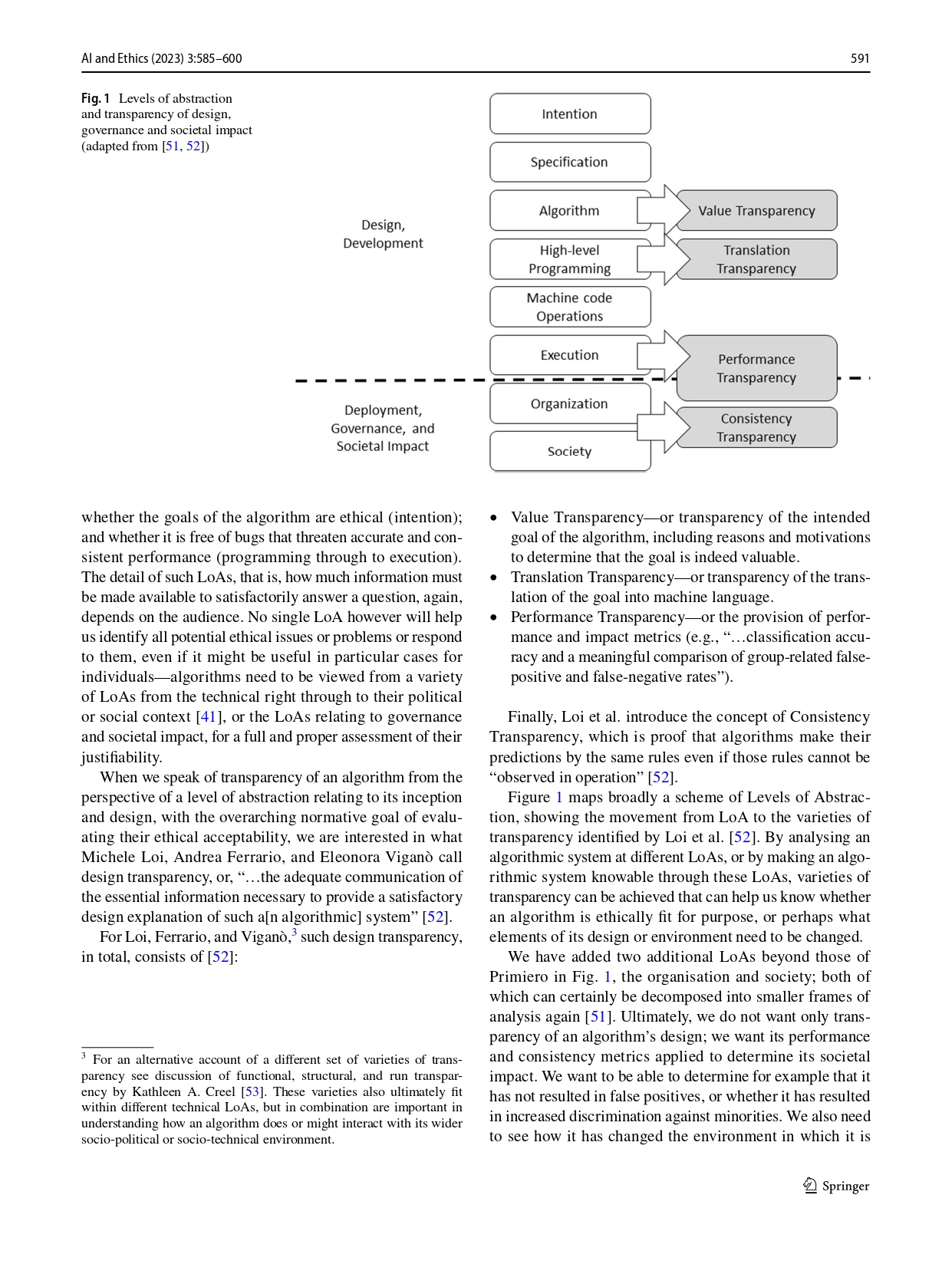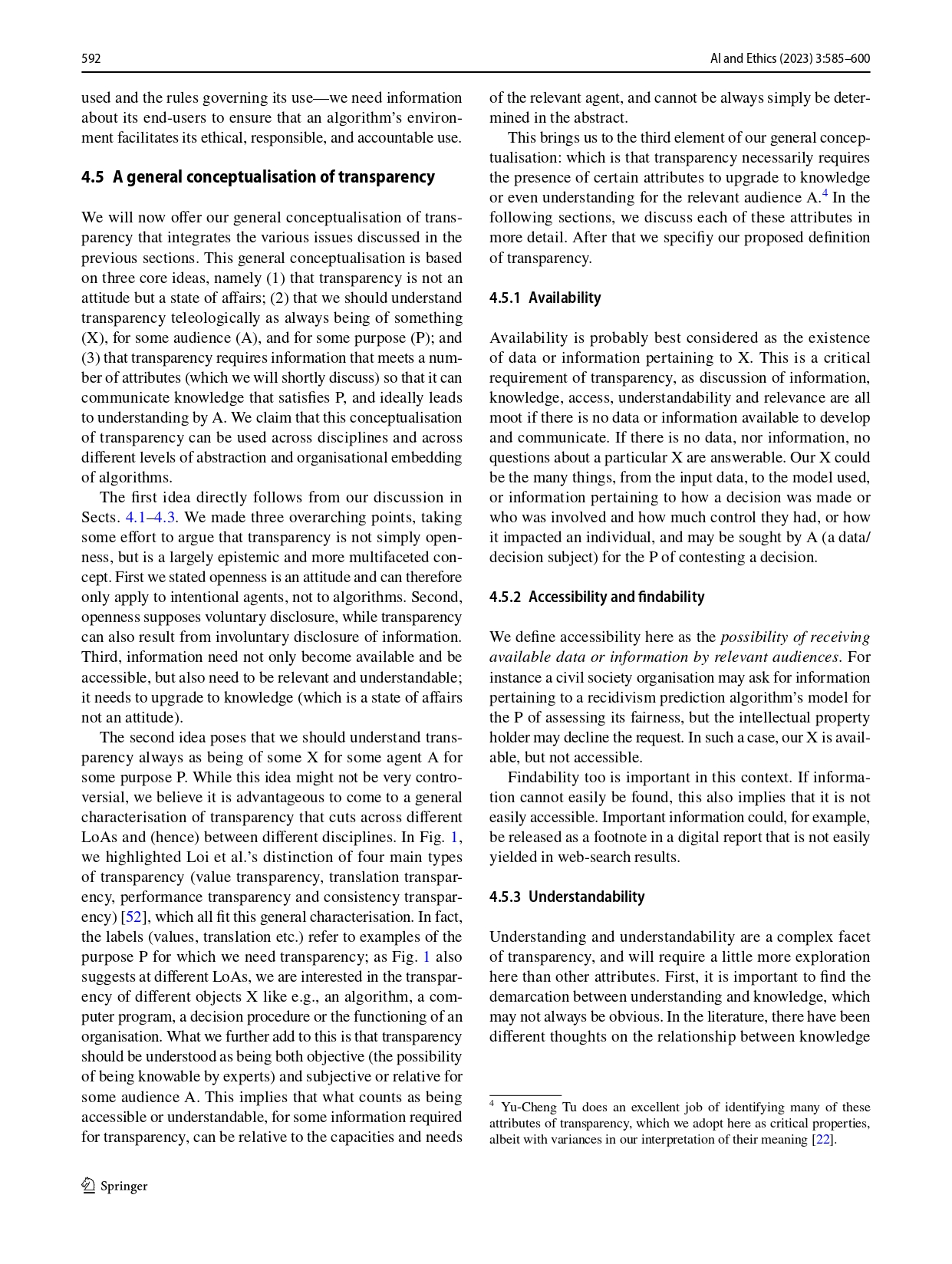
















Algorithms and AI tools are becoming increasingly influential artefacts in commercial and governance contexts. Algorithms and AI tools are not value neutral; to some extent they must be rendered knowable and known as objects, and in their implementation and deployment, to see clearly and understand their implications for moral values, and what actions can be undertaken to optimise them in their design and use towards ethical goals, or whether they are even suitable for particular goals. Transparency is a term with variable uses and interpretations, a problem which can challenge its use in design and policy. Here, we attempt to further clarify transparency. We argue that transparency is the state of affairs that obtains when relevant and understandable information about some X is available and accessible to some target audience (A), so that this information is sufficient for A for the purpose (P). Moreover, we connect this conceptualisation with transparency’s moral value, where P is to provide an account about X’s supportive or conflicting relationship with relevant values and goals. Such teleological ends in our context here can be the ability to account for the degree to which an algorithm, process or organisation respects certain values and is conducive to (social) goals.
Authors
Paul Hayes, Ibo van de Poel, Marc Steen
Year
2022
Download
s43681-022-00190-4-2.pdf